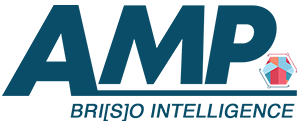AP Invoice automation: a steppingstone towards a paperless office
In order to stay competitive, businesses need to constantly strive to increase efficiency, quality and security. Reducing the number of paper-based processes is generally regarded as a best practice and can be considered as an enabler to achieving these goals.
Despite the huge advances in technology and the burden that paper-based processes place on many organizations, it is a harsh reality that in many companies the three-decade old dream of the paperless office is still a distant reality. Even a paper-light office, as a more attainable short term goal, seems out of reach for many.

Disadvantages of paper based processes
The biggest issue with paper-based processes is the cost they bear on the company. These costs can take many forms. Let us consider some of the most apparent ones.
Direct Costs
There are of course the typical direct costs associated with paper-based processes. These are the cost of paper, ink, printer maintenance and filing cabinets.
Lost Productivity
Then there are the costs of the labor-intensive processes of printing and filing and the lost productivity from employees spending time searching for documents or dealing with lost or damaged documents. This can take up many man-hours better spent on more productive tasks.
Impedes Working Remotely
Another form of lost productivity is the fact that paper-based processes require physical access to the paper documents concerned. With the increasing need for employees to be able to perform their work remotely it can be considered a showstopper if the documents in question cannot be accessed.
Security Risks
Theft, corporate espionage, document loss or damage due to natural disasters, all these are security risks that are particularly relevant to paper documents. The implications can be catastrophic and could even endanger the companies’ future existence.
Environmental Costs
Even with the drive towards maximum recycling, paper production and paper waste management have an enormous impact on the environment. Forrest loss, production pollution and waste disposal all share in the burden.
Starting your paperless journey with AP invoice automation
For many companies, invoices are the most common type of business document. Depending on the size of your company and the number of vendors you do business with, this could vary between hundreds to thousands of invoices every month.
Paper Invoices
While a lot of these documents may be in digital form, most of them will probably be received and processed in paper format. According to the latest figures from Eurostat, in 2020, 76 percent of companies in the EU with over 10 employees (excluding financial sector) are still sending paper based invoices, and only 32 percent are sending eInvoices suitable for automated processing.
Best Practice
It is widely accepted that removing paper-based processes from accounts payable is a best practice. The obvious gains to be made from negating paper from the process are manyfold. Invoice automation software can help you streamline your accounts payable process in an efficient and cost-effective way, while keeping invoice information secure and accessible to employees regardless of their physical location.
The paperless office
Once paper has been eliminated from the AP process, one may quickly start to recognize opportunities to eliminate paper from other processes too. Some of the technology already implemented in your journey with automating the AP process may even be supporting a quick application to other areas.
The AMP Intelligent Invoice processing solution offers SAP companies an easy way to benefit from AP invoice automation and will help your company benefit from eliminating paper from the AP process. If you would like to learn more please follow the link to see what AMP Invoicemanagement can do for your company.
Discover how you can eliminate paper from the AP process

